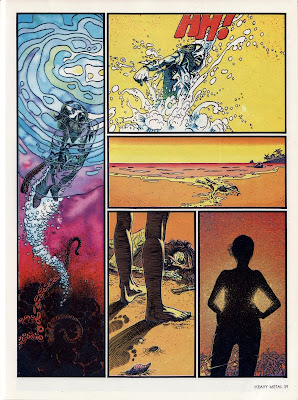Book Review: 'Set of Wheels' by Robert Thurston
1 / 5 Stars
‘Set of Wheels’ (281 pp) was published by Berkley Books in February, 1983. The cover illustration is by Alan Daniels.
Robert Thurston (1936 - 2021) began his authorial career as an attendee of the 1968 Clarion Science Fiction Writers’ Workshop, with his first story ('Stop Me Before I Tell More') seeing publication in the anthology 'Orbit 9' (1971). Thurston's short stories saw print in magazines and anthologies all during the New Wave era. Along with his own short and long fiction, Thurston wrote novels for the wargame-derived 'Battletech' franchise, and the TV show-derived 'Battlestar Galactica' franchise.
'Wheels' is an expansion of a short story, titled simply 'Wheels', that Thurston published in 1971 in an anthology devoted to pieces produced at the Clarion science fiction writers' workshop. A review of 'Wheels', and other Thurston tales, is available at the MPorcius Fiction Blog.
‘Set of Wheels’ is not a very good book. In fact, it was a struggle to finish..........
The novel is set in the early 21st century, after some poorly defined economic and / or social collapse has transformed the nation into a loose collection of city-states. Outside the cities the landscape is slowly being depopulated, the highways are abandoned, and drifters, outcasts, criminals, the destitute, and religious fanatics control the dwindling numbers of small towns, road stops, and villages.
Within the cities, car ownership is heavily regulated (drivers must obtain a ‘safdry’ license). Vehicles are prohibited from travelling at high speeds, drivers are subject to random police checkpoints, and even minor moving violations can result in the permanent loss of a license.
Teenager Lee Kestner is bored, sullen, and rebellious. Not only is living with his alcoholic father depressing, but Lee has been turned down for a learner’s permit 17 times. Desperate to get his own set of wheels, and to experience the freedom of independent travel, Lee hands $500 over to his onetime friend Lincoln Rockwell X. In return, Lee gets a barely-running, beat-up, antique, 1967 Ford Mustang.
Despite the questionable mechanical status of his newly acquired car, Lee promptly takes off for the unregulated countryside outside the city limits. There he joins up with a loose coalition of outlaw drivers, gets his Mustang fixed up, and enters into a tumultuous romance with a girl named Cora.
Before long, Lee finds himself heading out across the under-populated landscape of the USA, unsure of his destination, but convinced that somewhere out on the open road, he will find purpose for a life otherwise marked by aimlessness and spiritual anomie.
‘Wheels’ is not much of an sf novel. Indeed, the sf elements are very muted, and serve as a sort of vague backdrop to the central goal of the narrative, which is to allow author Thurston to write lengthy, tedious passages of dialogue in which his characters expound on their existential despair.
Thurston’s efforts to impart a wistful, melancholy atmosphere to the activities of his modern-day nomads seems contrived and unconvincing. Let’s face it, whether made in 1967, 1975, 1982, 1996, or even today, the Ford Mustang always has been a piece of shit car, relying on its ‘cool’ appearance, and industry myth-making, to screen the fact that it has always been shoddily designed, shoddily manufactured, and overly prone to mechanical breakdowns.
(Although, to be fair, the same thing can be said about practically every vehicle made by Ford….)
To make things worse, Thurston adopts the affectation of eschewing quotation marks to set off dialogue. Readers will need to supply the patience to decipher these sorts of exchanges:
Get us out of here.
Her smile vanishes. Logical, perhaps, it’s been a ghost-smile.
Not a chance, honey.
But you and me, we-
I know what we done, but that’s just ice in the Amazon, far as I’m concerned.
If you’re hoping for something that resembles George Miller’s ‘Mad Max’ and ‘The Road Warrior’, or John Jake’s ‘On Wheels’, then you’re very much out of luck. The few episodes of action that take place in ‘Set of Wheels’ seem forced and tangential.
My recommendation ? ‘Set of Wheels’ is best avoided, unless you are adamant about reading any and all sf novels with a 'car' theme.




















































































